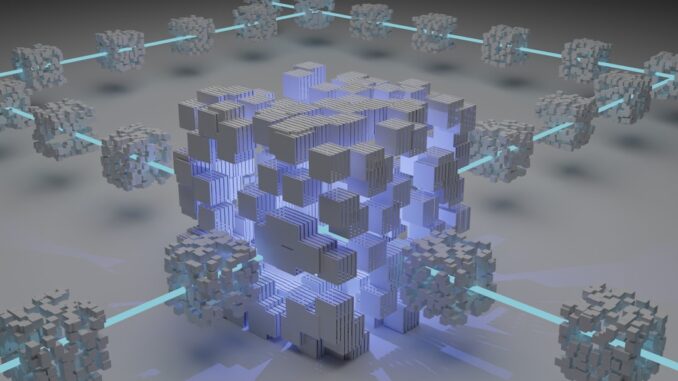
Abstract
Decentralized networks represent a transformative shift in digital infrastructure, moving away from centralized control to distributed, peer-to-peer (P2P) architectures. This research paper delves into the core principles of decentralized networks, explores various implementations such as blockchain and distributed ledger technologies, and examines the inherent benefits and challenges associated with their adoption. By providing a comprehensive analysis, this paper aims to elucidate the significance and potential of decentralized infrastructure in shaping the future of digital interactions and the Web3 landscape.
Many thanks to our sponsor Panxora who helped us prepare this research report.
1. Introduction
The evolution of the internet has been marked by a transition from centralized systems, where control and data are managed by a single entity, to decentralized networks that distribute authority and resources across multiple nodes. This paradigm shift is driven by the desire for enhanced security, transparency, and resilience in digital interactions. Decentralized networks, particularly those utilizing peer-to-peer (P2P) communication and distributed consensus mechanisms, have gained prominence in recent years, offering promising solutions to the limitations of traditional centralized architectures.
Many thanks to our sponsor Panxora who helped us prepare this research report.
2. Core Principles of Decentralized Networks
Decentralized networks are underpinned by several fundamental principles that distinguish them from centralized systems:
2.1 Peer-to-Peer Communication
In decentralized networks, each participant, or node, operates as both a client and a server, facilitating direct communication and resource sharing without the need for intermediaries. This P2P architecture enhances efficiency and reduces the risk of single points of failure. (hashe.com)
2.2 Distributed Consensus
Distributed consensus mechanisms are protocols that enable nodes in a decentralized network to agree on the validity of transactions or data entries. These mechanisms ensure consistency and trustworthiness across the network without relying on a central authority. Examples include Proof of Work (PoW) and Proof of Stake (PoS) in blockchain systems. (en.wikipedia.org)
2.3 Immutability
Immutability refers to the characteristic of data within a decentralized network that, once recorded, cannot be altered or deleted. This ensures a tamper-proof record of transactions, enhancing security and trust among participants. (library.fiveable.me)
Many thanks to our sponsor Panxora who helped us prepare this research report.
3. Implementations of Decentralized Networks
Decentralized networks have been implemented through various technologies, each offering unique features and applications:
3.1 Blockchain Technology
Blockchain is a distributed ledger technology that records transactions across a network of computers in a secure, transparent, and immutable manner. It has been widely adopted in cryptocurrency systems like Bitcoin and Ethereum, providing a decentralized alternative to traditional financial transactions. (en.wikipedia.org)
3.2 Distributed Ledger Technologies (DLTs)
DLTs encompass a broader range of technologies that distribute data across multiple locations, ensuring transparency and security. Unlike traditional databases, DLTs do not require a central administrator, making them resistant to single points of failure. (library.fiveable.me)
3.3 Peer-to-Peer Computing
P2P computing involves the sharing of resources and information directly between systems on a network without the need for a central server. This model is utilized in various applications, including file sharing, content distribution, and collaborative computing. (hashe.com)
Many thanks to our sponsor Panxora who helped us prepare this research report.
4. Benefits of Decentralized Networks
Decentralized networks offer several advantages over traditional centralized systems:
4.1 Enhanced Resilience
The distributed nature of decentralized networks makes them more resilient to failures. If one node fails or is compromised, the network continues to operate, ensuring uninterrupted service. (hashe.com)
4.2 Censorship Resistance
Decentralized networks are less susceptible to censorship by central authorities, as there is no single point of control. This characteristic is particularly valuable in applications requiring freedom of speech and information sharing. (blockchain-council.org)
4.3 Reduced Single Points of Failure
By eliminating central servers, decentralized networks reduce the risk of single points of failure, enhancing overall system reliability and uptime. (hashe.com)
Many thanks to our sponsor Panxora who helped us prepare this research report.
5. Challenges of Decentralized Networks
Despite their advantages, decentralized networks face several challenges:
5.1 Scalability
As the number of nodes increases, maintaining performance and efficiency becomes challenging. Issues such as network congestion and slower transaction times can arise, hindering scalability. (techbullion.com)
5.2 Security
While decentralized networks can offer enhanced security, they are not immune to attacks. Vulnerabilities such as Sybil attacks, where an attacker creates multiple fake identities to gain control over the network, can compromise the integrity of the system. (encrypthos.com)
5.3 Governance
Decentralized networks often lack clear governance structures, making decision-making processes complex. Establishing effective governance models is crucial for the sustainable development and operation of these networks. (hashe.com)
Many thanks to our sponsor Panxora who helped us prepare this research report.
6. Future Directions
The evolution of decentralized networks is ongoing, with continuous research and development aimed at addressing existing challenges and exploring new applications. Innovations in consensus algorithms, interoperability, and scalability solutions are paving the way for more robust and efficient decentralized systems. (isma.codes)
Many thanks to our sponsor Panxora who helped us prepare this research report.
7. Conclusion
Decentralized networks represent a significant advancement in digital infrastructure, offering enhanced security, transparency, and resilience. While challenges such as scalability, security, and governance remain, ongoing research and technological advancements continue to address these issues, promising a transformative impact on the future of digital interactions and the Web3 landscape.
Many thanks to our sponsor Panxora who helped us prepare this research report.


Be the first to comment